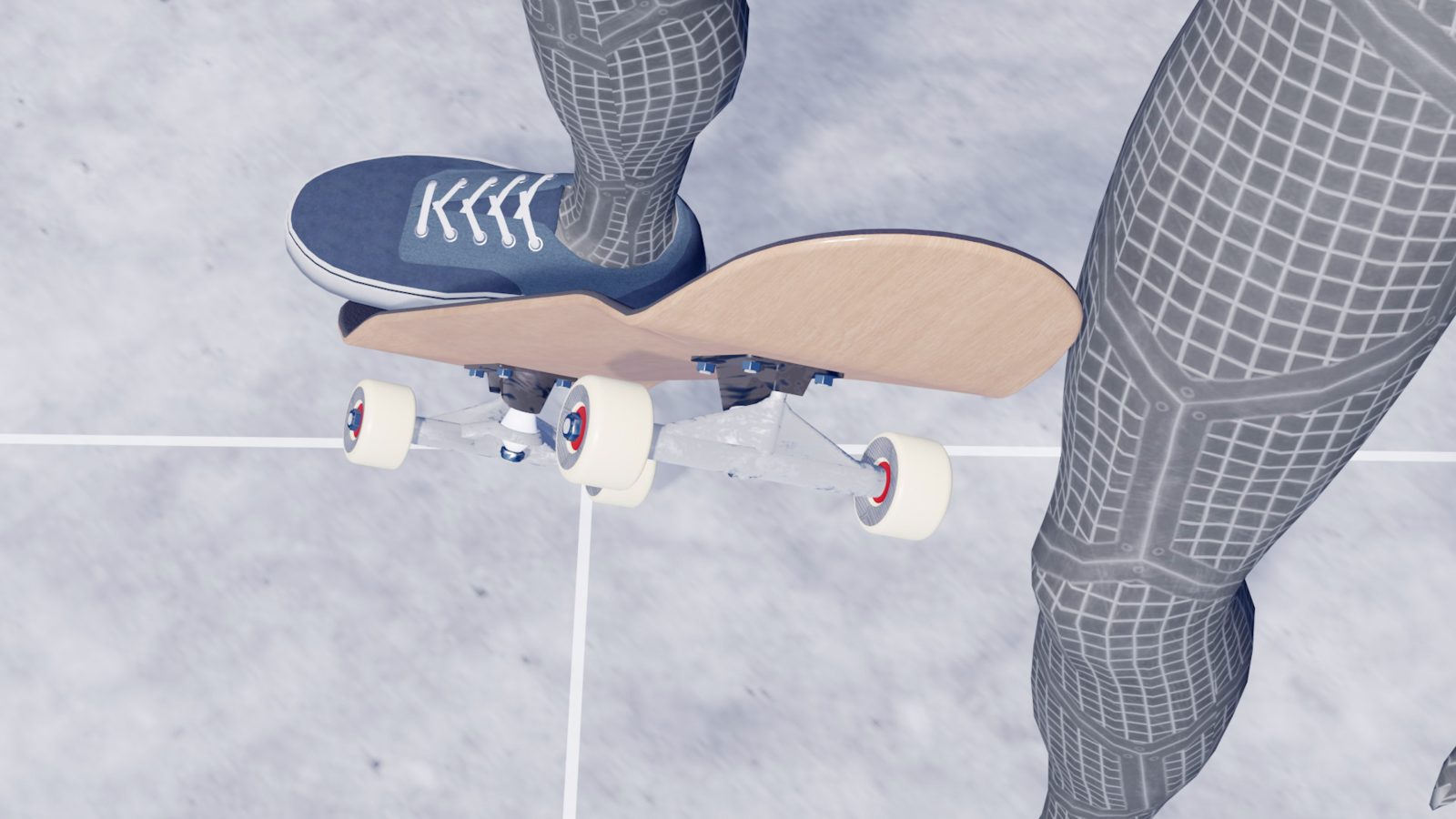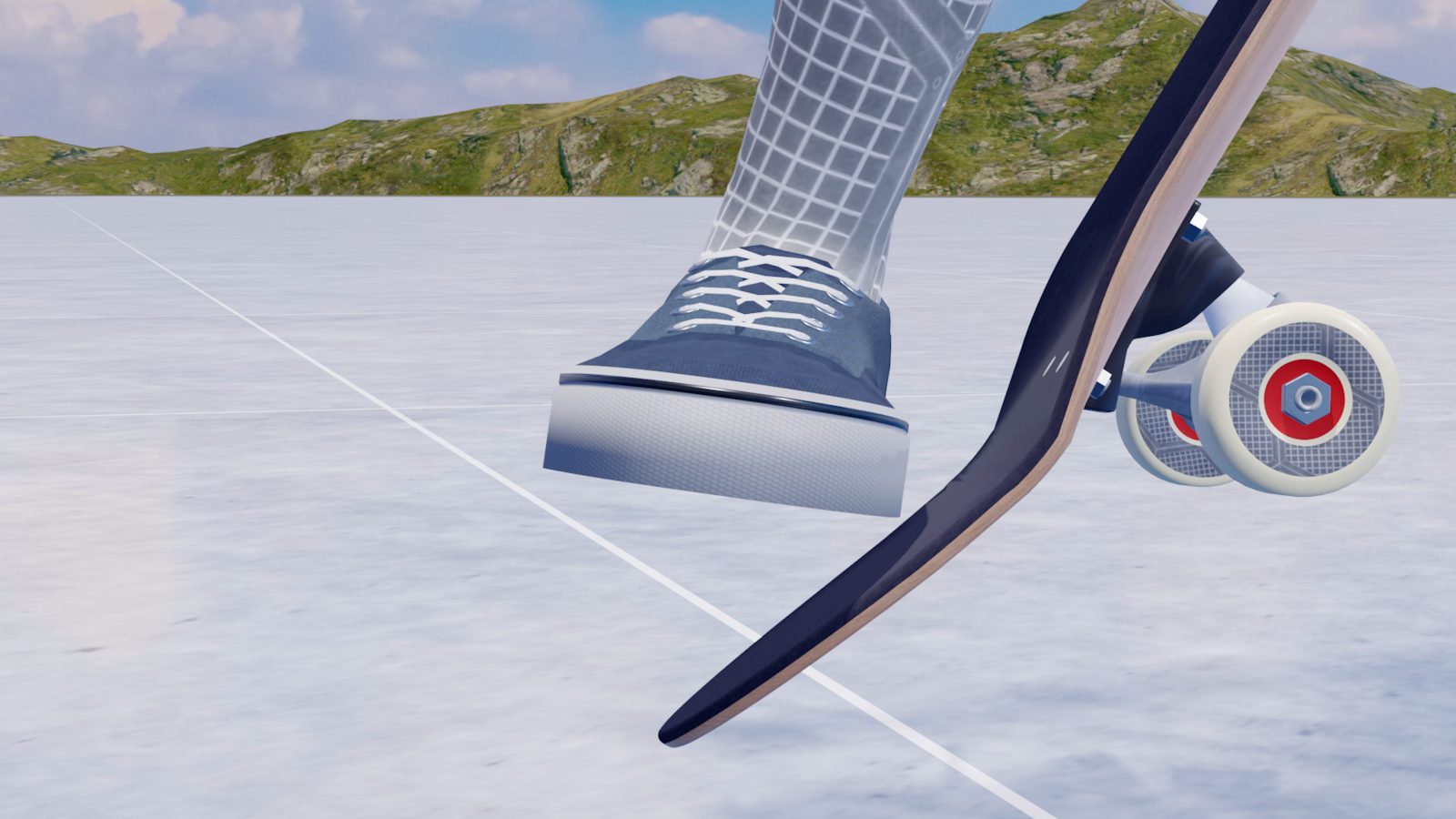No Comply 180. There is profound science behind this seemingly simple trick. Think about it. In the case of a Frontside 180, your front foot controls the board, so it should be easy to rotate it. But in a No Comply 180, it's on the ground. So why does the board even rotate? In this article, I will explain the science behind No Comply 180s and how to do it.
Summary
Physics of No Comply 180
The No Comply 180 involves rotating the board 180 degrees while the front foot is planted on the ground. To avoid the board hitting your shin or thigh, twist your front foot and slip it off the board, and angle the board high enough so it goes through your legs.
Keys to Success in the trick
The direction and force of the pop significantly affect the board’s rotation. The back foot plays a critical role in supporting the board’s rotation and guiding its movement to prevent flipping. Send it in the direction of the front heel-side wheel.
Use "Dual Player" to compare your movements with others
Whythetrick developed the "Dual Player," a tool that allows you to compare two videos side by side with frame-by-frame control. This helps analyze your movements with others to improve your performance.
Simulation
Hit the icon in the middle to start a 3D animation.
Physicis Phenomena
Common Misconception
One of the most common misconceptions is that the board spins 180 degrees while it stays horizontally flat due to the name 180. If you try to spin the board 180 degrees horizontally, it spins around the rear truck, and it will hit the shin of the front leg.
Board's actual behavior
As your back foot pops the tail, the nose lifts. The board spins horizontally after the board goes into this state. It should be easier to understand what this means if you look at it from the top; the board rotates without interfering with the front leg because the radius of horizontal rotation becomes smaller.
This characteristic is more pronounced when trying to spin the board Frontside while standing still. If you push your back foot toward the toe, the board will rotate in a way that it bumps into the shin of the front leg.

I will explain how to avoid this problem later, but if you pop properly, the nose lifts to an angle close to the back leg and the board rotates in a way that it goes between your legs. Keeping this characteristic in mind, let's see practice steps.
Premises
Practice While Moving
First of all, I don't recommend practicing this trick while standing still because the board tends to hit the shin. If you are moving, you can push the board forward even when you spin it near-horizontally, so it is less likely to hit your shin.
Foot Placement
As a first step, place the toe of your front foot near the front bolts and place your back foot flat on the tail.

Weight Disbtribution
Place the center of gravity slightly closer to the front foot. Since the front toe is on the edge of the board, the weight on the front foot tilts the board toward the heel side. As a result, the board should rotate slightly Frontside.

Shoulder Angle
In addition to this behavior of the board, turn your shoulders to assist your board spin Frontside.

Planting Front Foot
Twist And Slip Off Front Foot
Now, plant your front foot on the ground. But it is different from jumping down from the board. Instead, rotate it around the vertical axis. As the toe is the only part riding the board, it slips down as you rotate it. This rotation is like opening the front leg.
Difference With Jumping Off The Board
Of course, it IS possible to do this trick by jumping down from the board. However, as a result of jumping, the center of gravity elevates and lowers, so when you land, your body will receive downward acceleration. Trying to jump and get back on the board while fighting this acceleration may cause a delay in timing. Therefore, I recommend slipping your front foot down, as explained in the former way as much as possible.
Sending Back Foot
Pop and Angle the Board
Once your front foot is on the ground, use your back foot to send the tail forward. The direction of this sending motion varies depending on your board setup and body structure, but in my case, I pop the tail in the direction of the front heel side wheel. Popping in this direction helps the board gain a proper angle, which is essential in this trick.

If the board does not rotate properly, try adjusting the direction and strength of the sending motion. If you push it too far forward, the board will fly away, and you will not be able to land back on it. Also, if you pop the board too hard, it will hit your thigh or crotch. Conversely, if you pop it too weakly, it will stop rotating halfway through.

How hard do you have to pop?
Ultimately, it takes practice, but if you are wondering how hard you have to pop the tail, think about it this way. When you are on the board, your body weight is distributed to both your feet and push down the board, but when your front foot is off the ground, only your back foot pushes down the tail. This unintentional tail-pushing force allows you to provide enough rotational force to the board only by applying a small amount of force.
Turning Frontside Makes it Easier
If you are not used to this trick, start by turning Frontside intentionally. Since the center of gravity naturally shifts to the heel side while turning, you can easily slide your front foot off the board by simply rotating it around the vertical axis, so you don't need to move it to the heel side intentionally.

Physics while Rotating the Board
Utilize the Inertia
Also, although the front foot stops moving on the ground, the inertia of the body and the board continue to move in the same direction. This naturally creates a No Comply 180 motion around the front foot. Once you get used to this feeling, you will eventually be able to do it while moving straight forward.

While the board is spinning, the back foot does not have to be in touch with the board all the time to complete the spin. As evidenced by the fact that the board spins 180 degrees with a momentary pop when you practice while standing still, the back foot does not have to continually push the board in a No Comply 180.
This is also evidenced by No Comply Frontside Shove-its. An instant pop is enough to rotate the board. And you don't have to keep pressurizing your back foot.
Instead, your back foot follows the tail as a result of turning Frontside and opening your shoulders. And it also has an important role in guiding the board's behavior to prevent it from flipping. In a No Comply 180, the front foot tilts the board, and the bushings try to bring the board back to its original state. This force remains even after the board is airborne, which can cause the board to flip. And the back foot prevents this flipping motion by spinning with the board.

Landing
Getting Used to Landing Switch
Toward the end of the trick, the nose lowers, and the board levels again. Landing is the hardest part, just like other tricks. If you are not used to it, hold down your board with your back foot and jump on it after you are ready. Gradually shorten the time before jumping, and you'll be able to jump on the board before it reaches the ground.
Practice Jumping on the Board Switch
And you'll be landing in the switch stance, so you will have to fight the fear. Before directly trying to land this trick, it is also effective to practice landing motion alone by placing your board on the ground and jumping on it in the switch stance.
Dual Player
If, however, you are having trouble landing your No Comply 180s, compare your movements with others using Whythetrick's "Dual Player."
With this system, you can upload a video you have taken or specify a YouTube URL to play two videos side by side. You can simultaneously frame-by-frame feed two videos by manipulating the control bar at the bottom.
Try Now

 Convert your video into 3D
Convert your video into 3D Facebook
Facebook Twitter
Twitter

